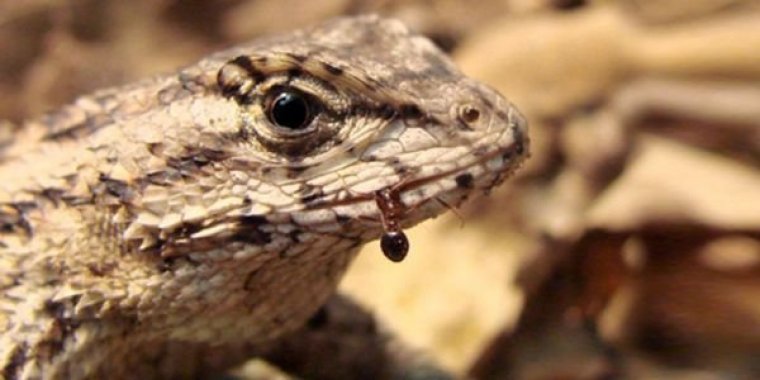| News / Science News |
Eating fire ants could prepare lizards for future fire ant attack
Eating fire ants might prepare a lizard's immune system for ant stings, according to a new study by researchers at Penn State.

Eating fire ants might prepare a lizard's immune system to be stung by the ants. Photo: Langkilde Lab/Penn State
The study assessed how the immune system responds to lizards eating and being stung by these ants and might help researchers understand how other native species respond and adapt to the invasive insects.
Fire ants are invasive pests in the southeastern United States that are expanding their range as the climate warms. When they sting, they inject venom that triggers an immune response in a wide variety of species, from humans to livestock to lizards.
In eastern fence lizards — which also occur throughout the region — repeated stinging can cause paralysis and even death.
Nonetheless, lizards often eat fire ants, in addition to other ant species.
"We know that lizards from areas with fire ants have different immune profiles than lizards in areas without them," said Tracy Langkilde of Penn State, leader of the research team.
"Because the immune system is so critical for survival, we wanted to determine if these differences in immune profiles can be directly attributed to lizards frequently being stung by fire ants, eating fire ants or something else."
The researchers investigated six immune measures in response to three weeks of lizards being fed dead fire ants or being stung by fire ants.
When lizards were fed fire ants, immune measures were enhanced in comparison to lizards that were stung.
The researchers observed an elevation in a type of white blood cells called basophils; an increase in complement activity, which helps or "complements" antibodies and other aspects of the immune system; and an increase in a type of immunoglobulin antibody (IgM) known to be reactive to fire ant venom.
"At least for native fence lizards, the old adage that what does not kill you makes you stronger may hold some truth," said Sean Place, a program director in NSF's Division of Integrative Organismal Systems.
"This research provides valuable insights into the mechanisms that may underly the capacity for native species to counter negative effects of non-native introductions and underscores the significance of NSF's support of fundamental research on organismal responses to their biotic and abiotic environments." (U.S. National Science Foundation)
YOU MAY ALSO LIKE





